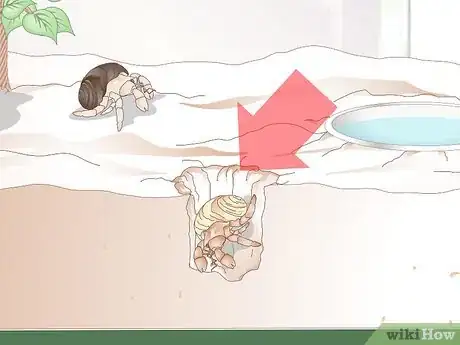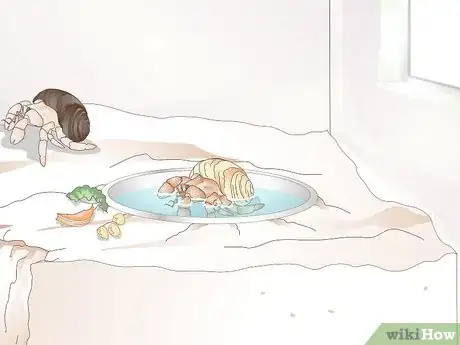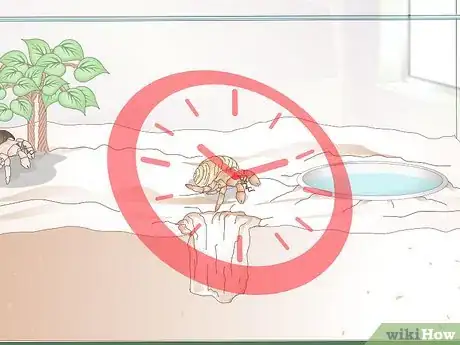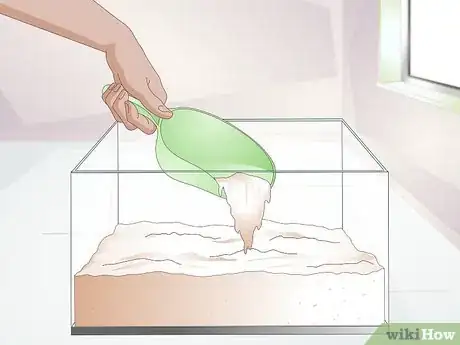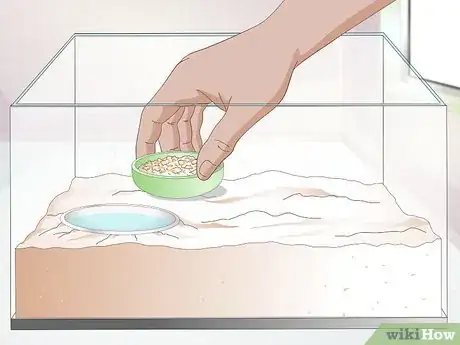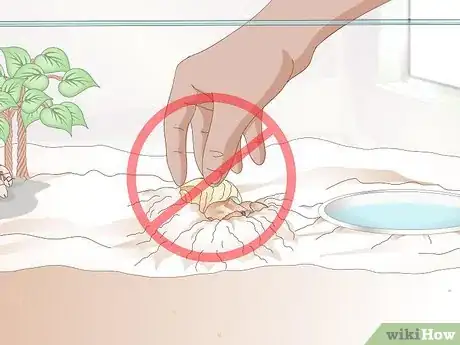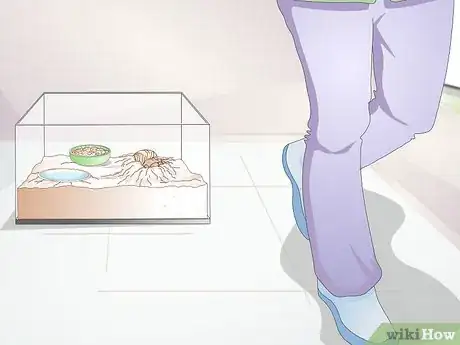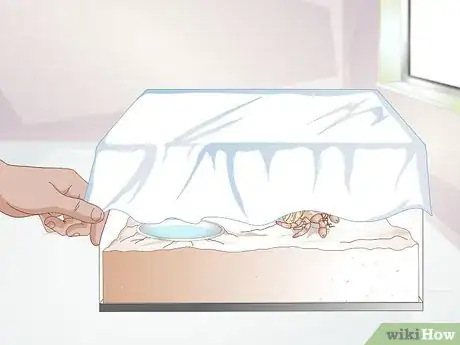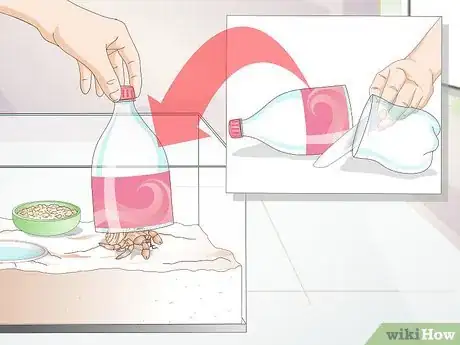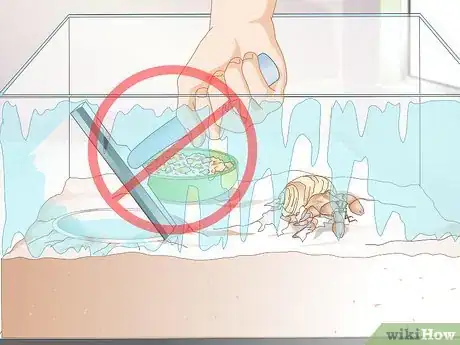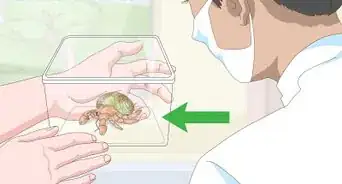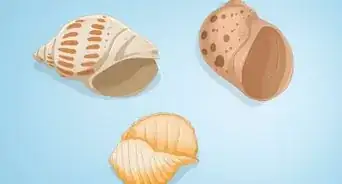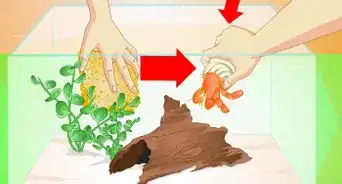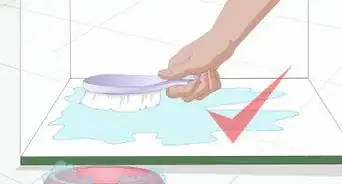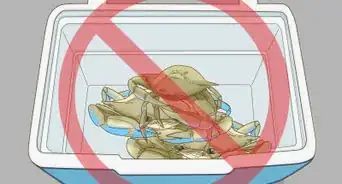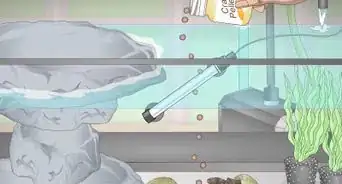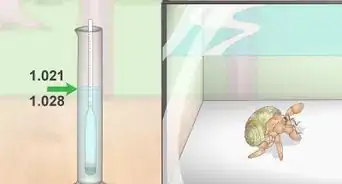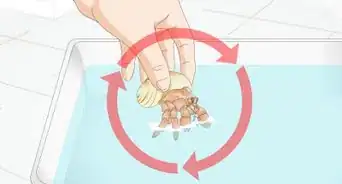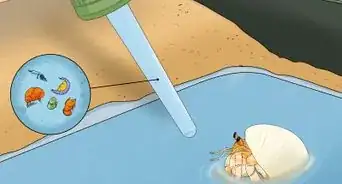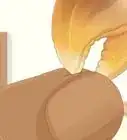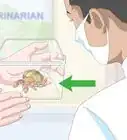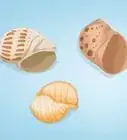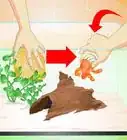This article was co-authored by Pippa Elliott, MRCVS. Dr. Elliott, BVMS, MRCVS is a veterinarian with over 30 years of experience in veterinary surgery and companion animal practice. She graduated from the University of Glasgow in 1987 with a degree in veterinary medicine and surgery. She has worked at the same animal clinic in her hometown for over 20 years.
wikiHow marks an article as reader-approved once it receives enough positive feedback. In this case, 93% of readers who voted found the article helpful, earning it our reader-approved status.
This article has been viewed 33,971 times.
When caring for hermit crabs, understanding their molting process is vital to providing them with proper care. Molting hermit crabs require a special environment to successfully molt without any undue stress. By observing your crabs for signs of molting, setting up a safe isolation tank, and learning how to properly handle them during the molting process, you can help keep them healthy and happy.
Steps
Watching for Signs of Molting
-
1Watch for any excessive digging. When molting, hermit crabs completely bury themselves in the sand. A hermit crab that is preparing to molt will likely start to dig a lot more than usual. If you notice your crab is digging or beginning to bury itself in the substrate in the bottom of the tank, gently remove him and get him into the isolation tank.[1]
- Keep a close eye on your crabs. Observing their behavior on a regular basis is the only way to know if any of those behaviors are changing!
-
2Look for extra water or food consumption. When preparing to molt, hermit crabs will store food and water. Since the crab essentially “hibernates” while molting, it’s important for them to store food and water to sustain itself as it molts down in the sand. You may notice, then, that your crab is spending more time in its water bowls, or consuming more food than usual. This is a good sign that your crab is about to molt.[2]
- You just might notice a gel-like black bubble forming on the crab’s abdomen. This is where it is storing the food and water for its molting process. It’s hard to see very well, though, and its appearance is not always a surefire indicator that the crab is about to molt.[3]
Advertisement -
3Watch for lower activity levels. A crab that is molting or preparing to molt might show less signs of activity. Sometimes, crab owners may mistake a molting crab for a dead crab. A dead crab, though, will have a rather distinct, fishy smell. A molting crab won’t have that smell. If the crab is moving more slowly or hardly at all, check for other signs of molting and move it to an isolation tank.[4]
- Remember: sometimes a crab that has just molted may also give off a fishy odor, so the smell isn’t always the best way to determine death. A dead crab will also show indications of decay, like mold growing on its abdomen.
Preparing and Using an Isolation Tank
-
1Get a small tank. A simple ten gallon aquarium from your local pet supply store will suffice. You want the tank to be big enough to give the crab sufficient room to bury itself. But, since the crab will be in the tank alone, you won’t need anything more than 10 gallons.[5]
- Save this tank especially for molting crabs. If you have multiple crabs, use this tank for the crabs individually as they molt.
- If you have multiple crabs molting at the same time, try to keep them separated from crabs that aren’t molting. They should be okay to molt together in the same isolation tank—just keep an eye on them and make sure one doesn’t complete its molting and end up trying to attack the other while its still molting.
-
2Use play sand to line the bottom. A hermit crab must be completely buried in order to go through the molting process. Your tank should have a minimum of 6 inches of sand. This will provide an adequate amount of depth and space for your molting crab to bury itself. Play sand is your best option, since it’s the right texture and consistency for the crab.
-
3Add a cup of water to the sand. Mix the sand and water well, and add more water as needed until the sand is thoroughly moistened. When getting the sand to the right consistency, you want it to be damp, but not dripping or muddy. It should be moist enough to pack down.[6]
- Try digging out a small circular hole with your finger in the sand. If the sides of the hole stay put, you’re probably in good shape.
-
4Place food and water dishes in the isolation tank. When molting, hermit crabs will need food that is high in calcium. Some good options might be cuttlebones, sea biscuits, or sand dollars. In the water dish, the usual dechlorinated tap water is fine. You might consider putting a bit of saline water in with their normal water, though, as the crab will be craving a little more salt than usual after their molt.[7]
-
5Do not move a crab that has already begun molting. Sometimes, a hermit crab may bury itself in the sand of its normal tank to molt while you, its owner, are sleeping at night. Digging up a molting crab to put it in an isolation tank can cause undue stress to the crab, and could possibly injure or kill it. You have to be the best judge of whether or not your crab needs an isolation tank to molt. If you have multiple crabs and are concerned about the other crabs attacking the molting crab while it’s weak, you might go ahead and opt for the isolation tank.[8]
- If your primary tank has an undertank heater, your crabs should not be allowed to molt in that tank. This could be harmful to them.
- Some hermit crabs may also try to molt on the surface, without burying itself. Sometimes, this is fine, and the crab does well. Keep a watchful eye on any crabs that attempt this.
Handling a Molting Hermit Crab
-
1Leave your crab alone. One of the best things you can do for your molting hermit crab is to leave it alone. Handling the crab, digging it up, or otherwise disturbing it as it goes through the molting process could actually cause substantial harm to the crab. It’s best to keep the molting environment as close as possible to the one they would have in nature, which means leaving them alone to molt.[9]
- If you think for some reason that another crab might be disturbing or bothering the buried molting crab, you can carefully dig it up to check on its well-being.
-
2Make sure the crab has darkness. In order to go through the molting process, hermit crabs need darkness. This is why they bury themselves in the sand when they molt. If the crab stays on the surface and doesn’t bury itself, or if it doesn’t bury itself completely, cover the tank with a light cloth to provide some extra darkness.[10]
- Darkness is what helps trigger the crab’s production of a molting hormone that they need to successfully go through the molting process. Without adequate darkness, they may have difficulty molting.[11]
-
3Protect a molting crab that doesn’t bury itself. If you do have a hermit crab that doesn’t bury itself and begins to molt, it’s important to protect the crab, and to help simulate proper molting conditions. Cut the top half off of a regular 2 liter soda bottle. Rinse the bottle clean. With the lid of the bottle pointing upwards, cover the crab with the bottle and press the bottom down into the sand a bit. You can then cover the bottle, or the whole tank, with a cloth for darkness. [12]
-
4Avoid cleaning your isolation tank unless it is empty. Hermit crabs will actually eat most or all of the exoskeleton they shed when they molt, so cleaning up after them is a minimal process. To avoid unnecessarily disturbing a molting crab, don’t clean the isolation tank unless there are no crabs in it. To clean it after returning a molted crab to the primary tank, simply clean out any leftover exoskeleton pieces, and stir up the sand a bit. Add a little water if necessary to retain the necessary consistency. This kind of cleaning should be done every three months or so.[13]
Warnings
- Your crab could die if it is stressed. Avoid handling it.⧼thumbs_response⧽
References
- ↑ http://www.hermit-crabs.com/molting.html
- ↑ http://www.hermitcrabpatch.com/Hermit-Crab-Successful-Molting-a/138.htm
- ↑ http://www.hermit-crabs.com/molting.html
- ↑ http://www.hermit-crabs.com/molting.html
- ↑ http://www.hermitcrabassociation.com/pages/iso.html
- ↑ http://www.hermit-crabs.com/molting.html
- ↑ http://www.hermitcrabassociation.com/pages/iso.html
- ↑ http://www.hermitcrabpatch.com/Hermit-Crab-Successful-Molting-a/138.htm
- ↑ http://www.hermit-crabs.com/molting.html
